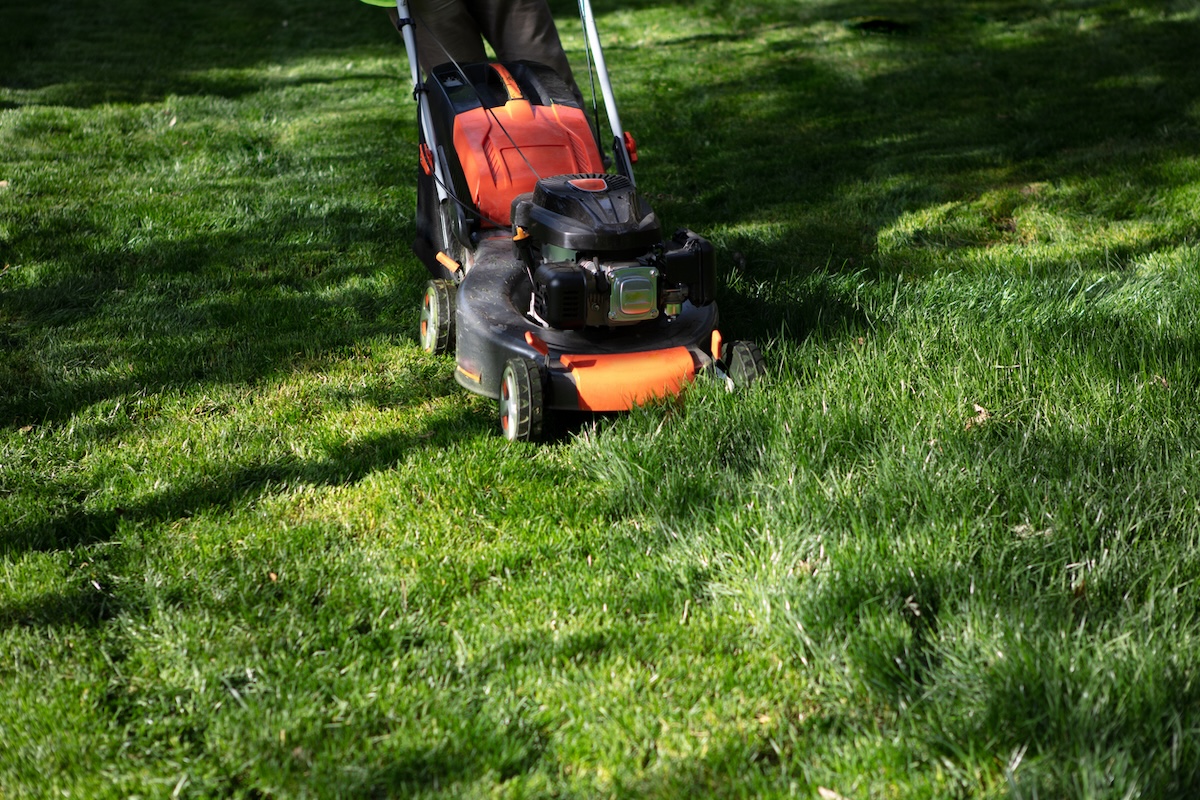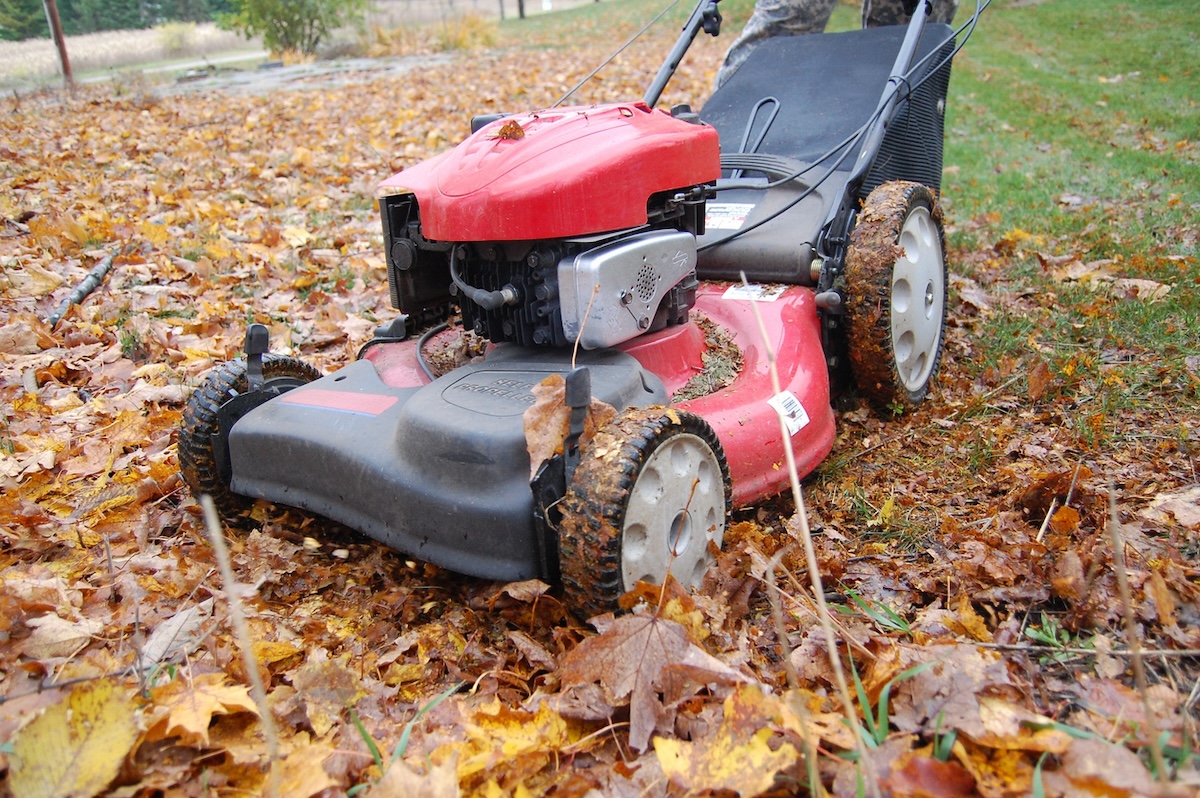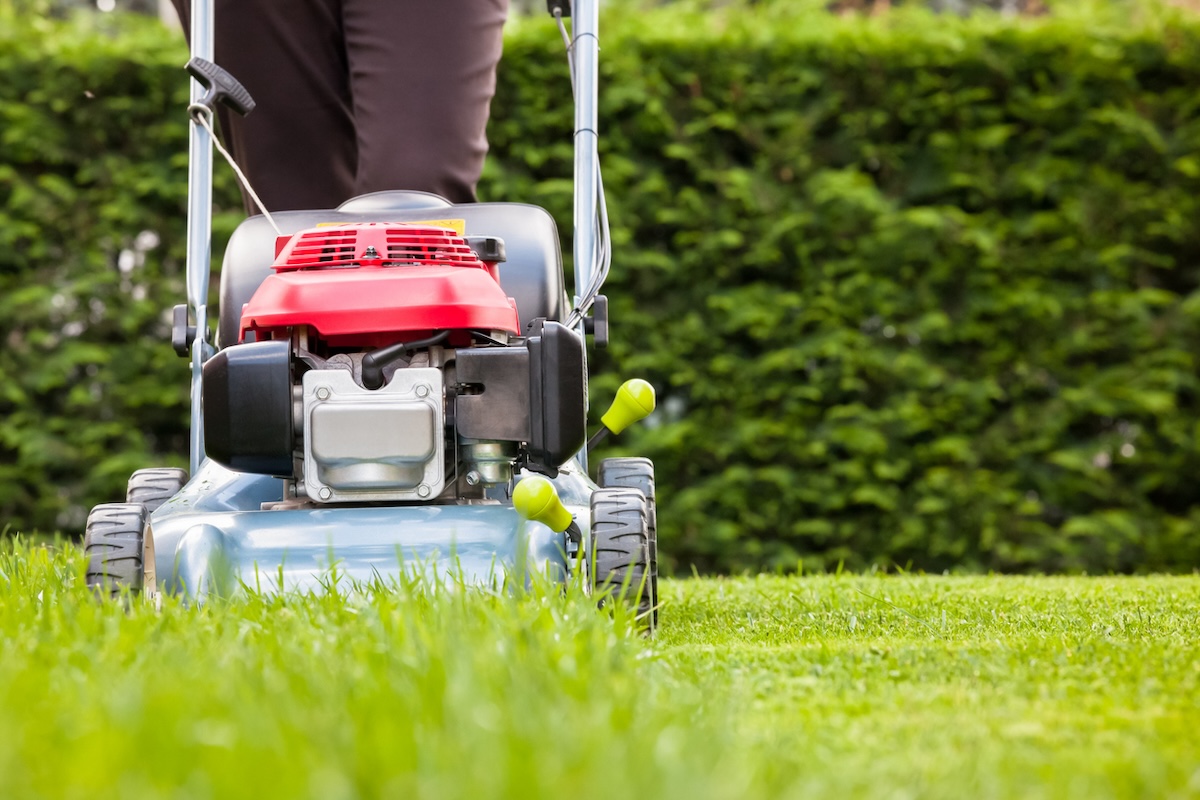

We may earn revenue from the products available on this page and participate in affiliate programs. Learn More ›
The ideal grass height depends on whether you have cool- or warm-season grasses. You’ll generally want to mow your cool-season grass to a height of between 2½ and 3½ inches, says Gene Caballero, co-founder of GreenPal. “This height helps promote a deeper root system, which helps with drought resistance and reduces weed growth,” he says. Warm-season grasses can be cut to a lower height of 1½ to 2 inches. How you cut your lawn also depends on other factors. “Grass type, season, and local climate impact the ideal cutting height,” Caballero says.
Cut to the height that’s best for your grass species.
When determining when it’s time to cut your lawn and how much to trim, the decision depends on the grass species. For example, cut warm-season grasses lower and keep cool-season grasses higher. While zoysia grass should never grow taller than 2 inches, you’ll want to wait until tall fescue is nearly 5 inches high before taking a little off the top.
When the grass reaches the height that tells you it’s time to mow, trim it to a height that’s specific to the grass species. You’ll cut warm-season grasses, such as zoysia and Bermuda grass lower than cool-season grasses such as Kentucky bluegrass and tall fescue. Use the grass cutting height chart below as a guide for when to cut your grass type and how low to trim it.
| GRASS TYPE | MOW WHEN IT REACHES THIS HEIGHT | CUT TO THIS HEIGHT |
| Kentucky bluegrass | 3 to 3¾ inches | 2 to 2½ inches |
| Tall fescue | 3 to 4¾ inches | 2 to 3 inches |
| Bermuda grass | 3 to 3¾ inches | 1 to 1½ inches |
| Bentgrass | ¼ to ¾ inches | ¼ to ½ inches |
| Centipede grass | 2 to 3 inches | 1½ to 2 inches |
| St. Augustine | 3¾ to 4½ inches | 2½ to 3 inches |
| Zoysia grass | 1½ to 2 inches | 1 to 1½ inches |
| Fine fescue | 3 to 3¾ inches | 2 to 2½ inches |
Resist the urge to cut too low.
While you might be tempted to mow your lawn short to create a neat and well-kept appearance or even extend the time between each mowing, cutting the lawn too low deprives each blade of grass of the surface area it needs for photosynthesis to happen. “Cutting grass too short can put stress on the lawn,” says Taylor Olberding of Nebraska, co-owner of national lawn care company Heroes Lawn Care. “It can make the lawn more prone to pests, diseases, and drought. It also exposes the soil, which leads to weed growth,” says Olberding.
Follow the 1/3 rule.
Along with mowing the grass to a height that works for the turf variety, it’s important not to cut too much off at one time. Doing so could make a lawn vulnerable to pests, disease, and drought. Plus, cutting tall grass can be more work when pushing and gathering clippings. A good rule of thumb is to never cut more than one-third of a blade of grass in a single lawn mowing effort. If you need to cut more than that to reach the optimal height for your grass type, then cut the grass more often to prevent it from growing too high between mowings.
Keep grass taller in the summer.
Hot, dry weather presents a threat to grass, as intense heat and drought can damage a lawn’s root system. Keeping the lawn taller in the summer allows the blades of grass to create more shade, and hence protection, for the sensitive roots below. “Keeping your grass a little longer helps to retain moisture in hot weather,” Olberding says. Taller grass can also help choke out weeds that thrive during warmer months of the year. As the weather cools down, you can start lowering the cutting height with each mowing. Once your grass stops growing in the fall, you can suspend lawn cutting until spring arrives, and the grass begins growing again.
Cut grass lower in the fall.

When cooler weather arrives, you’ll want to cut grass to a medium height of around 2 inches, not so low that the roots are exposed to cold weather, but not so high that the grass folds over on itself, making it susceptible to mold and disease. Cutting grass lower will also make your leaf-collecting efforts easier, since the leaves won’t become entangled in long grass blades.
Cut the lawn for overseeding.

Cool fall weather is ideal for seed germination of cool-season grasses and allows tender younger grass blades to grow and establish themselves before the onset of winter. Prior to overseeding, you’ll want to cut your lawn to a height of 1.5 to 2 inches tall. This shorter height allows the seeds to fall through the blades of existing grass and reach the soil; it also helps ensure sunlight will reach the young seedlings.
After overseeding, it’s crucial that you give the grass time to grow before you mow it again. Wait for the grass to reach a height of between 3 and 4 inches before cutting it.
Adjusting the deck height.
Unless you have a mower with labeled height settings, you’ll need to take some measurements to match the guidelines in the grass cutting-height chart above. Place your mower on a flat surface, such as the driveway. Remove the bagging attachment and open the side cover to reveal the blade. Next, measure from the blade to the ground to determine the cutting height.
How you adjust the height depends on your mower. Most new mowers have a lever that allows users to raise and lower the mowing deck. Older models have a lever behind each wheel that you’ll need to adjust independently. If you have the latter, make sure to adjust each wheel to the same height to ensure an even cut.
Final Thoughts
Fertilizing and applying weed and pest control strategies certainly play major factors in achieving a lush and verdant yard. But, don’t overlook mowing the lawn. Knowing when it’s time to give your yard a trim and how much to take off based on grass type is key to keeping your lawn the healthiest it can be.
